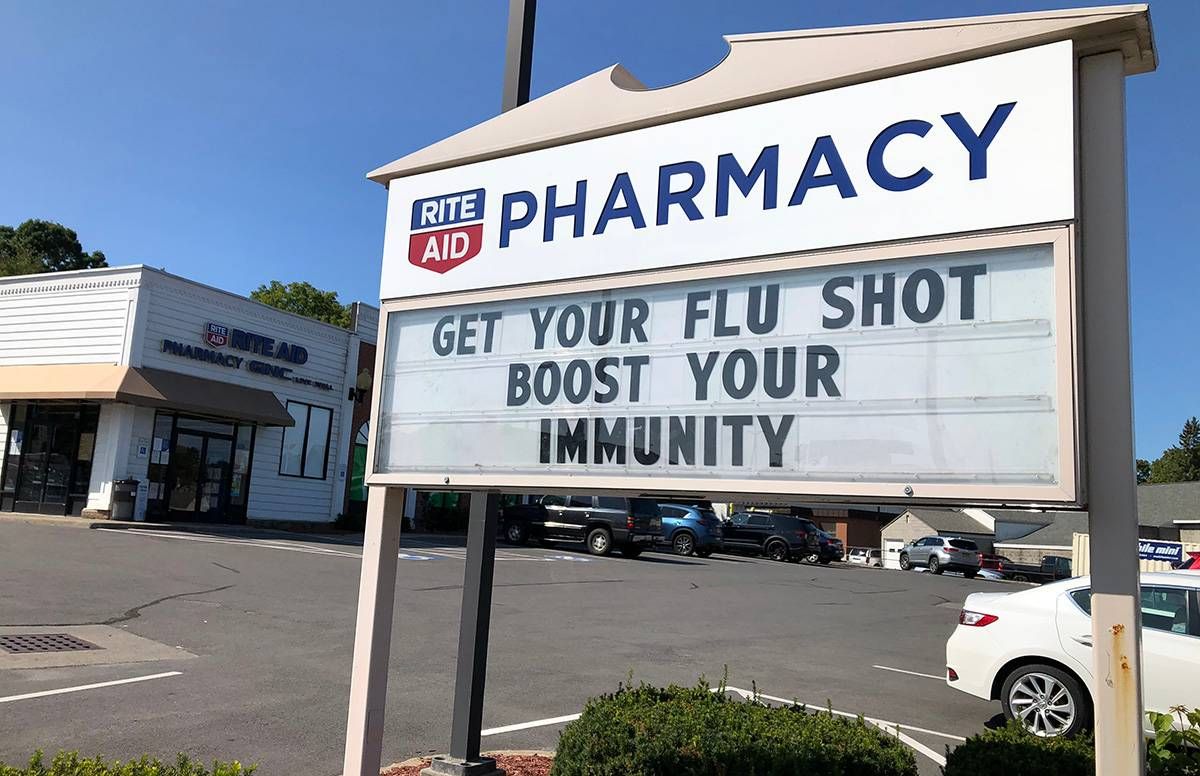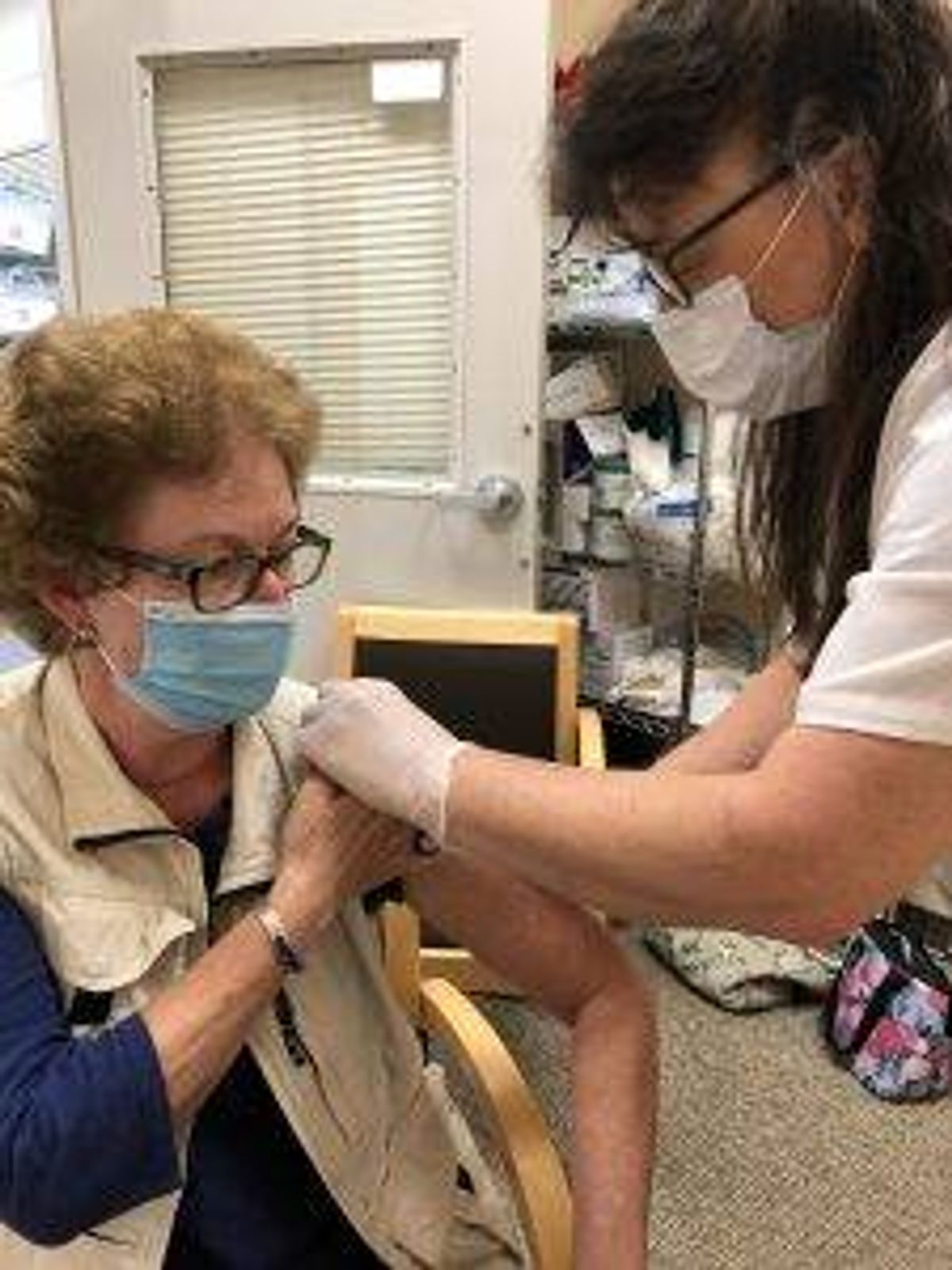Why 2020 Is Such an Important Year to Get a Flu Shot
The health care system is already overloaded. A bad flu season could make it worse.
Facing the double jeopardy of the deadly COVID-19 pandemic and the annual flu season rushing at us, health experts are doubling down on their usual flu shot appeals.

"This is going to be one of the most important years to get your flu shot," says Dr. Georges Benjamin, executive director of the American Public Health Association. Benjamin, who just turned 68, says he got his about a month ago.
"We don’t want to have two major infectious diseases that put people in the hospital."
To back up health officials, California Gov. Gavin Newsom made a special point of getting his own flu shot during a live news briefing in late September.
"I cannot impress upon you more the importance, the power and the potency of getting a flu shot," Newsom told viewers of his Facebook feed.

So far, some people are getting the message. Dawn Dewey, a pharmacist at a Walgreens drugstore in Greenville, N.Y., has been doing a brisk business in flu shots. She says the rush began earlier than usual this year, though some health authorities suggest waiting until late October, to ensure protection throughout the peak flu season.
“I just think everybody — with the COVID issue — they’re gonna be on top of flu,” Dewey says. She’s doing about 25 flu shots per day in the lone pharmacy of this small Catskills town, more than double the usual number at this stage of the season.
Expecting a higher-than-usual turnout, pharmaceutical companies are shipping more than 190 million doses for the U.S. alone.
Double Jeopardy
Health professionals, already taxed by a pandemic that has claimed more than a million lives globally, are understandably jittery about what this flu season may bring.
“We don’t want to have two major infectious diseases that put people in the hospital,” cautions Benjamin. “We know how seriously COVID taxed our health care system. So if you add influenza, which has a relatively high attack rate as well and puts people in the hospital, that would be a real problem.”
Also, since the two diseases tend to share the same symptoms — fever, chills, muscle aches, cough — widespread testing for coronavirus will become critically important, so doctors and patients know which one they’re dealing with. Since the only way to confirm that is by testing for coronavirus, a rush to sort out the two viruses could put additional stress on the limited supply of COVID-19 test kits.
So far, the COVID-19 virus has killed nearly six times the typical number of people who die from the seasonal flu annually in the United States. But the “regular” flu is nothing to be trifled with, experts say.
“It’s not a benign disease,” warns Benjamin. “People say, ‘Oh, don’t worry, it’s only the flu.’ No, no. This is a serious disease for some people.”
Our Commitment to Covering the Coronavirus
We are committed to reliable reporting on the risks of the coronavirus and steps you can take to benefit you, your loved ones and others in your community. Read Next Avenue's Coronavirus Coverage.
For proof, you need only look at the grim statistics from the 1918 flu pandemic, which caused an estimated 50 million deaths (yes, that's 50 million) worldwide, some 675,000 of those in the United States.
Of course, medicine has advanced considerably in the century since that pandemic, when there was no seasonal flu vaccine. But the seasonal flu virus still claims more than 34,000 lives in the U.S. alone in a typical year, and accounts for a half-million hospitalizations.
It’s especially hard on older patients.
“One of the challenges with flu is that extremes of age — the very young and the very old — are at the highest risk of getting really sick,” notes Benjamin.
He adds that people with chronic diseases get sicker from flu. Diabetes, heart disease and chronic lung disease such as asthma are all risk amplifiers and all are common conditions among older Americans.
A Pleasant Surprise?
Many experts speculate that we’re better prepared for flu season this year precisely because of the pandemic. People have become accustomed to masking, distancing and frequent washing of hands and household surfaces, which just happen to be great prevention tactics for flu.
According to Dr. Megan Ranney, an emergency physician and associate professor at Brown University, ”universal masking” can squelch COVID-19 infections by 70% to 90%. Mask wearing in the United States has hardly been universal. But despite a leveling off in the spring months, surveys show compliance remained above 60% in the U.S. through the summer. If those numbers hold up, it would likely help tamp down transmission this year.
Each spring, global health agencies collaborate to ferret out the predominant strains of influenza circulating in countries like Chile and Australia, because the southern hemisphere gets its annual flu season before the northern half of the planet. They then prepare a vaccine tailored to what’s been circulating. Infection rates and outcomes in those countries also provide a preview of what Americans can expect when it hits here. So far, they’re reporting a relatively mild year.
In a typical year, 40% of Americans get vaccinated for the flu. Benjamin says his organization is pushing to get that number to 60% in 2020. Currently. there is no proven vaccine for COVID-19, though several vaccines are in clinical trials and most experts predict one or more should be widely available by the summer or fall of next year.
The federal Centers for Disease Control and Prevention recommends annual flu shots for everyone over six months of age "with rare exceptions" for those with certain types of severe allergies to ingredients used in the vaccine. There are various formulations for different age groups, including a high-dose vaccine approved for people 65 and older (which may be out of stock or in limited supplies at some drugstores), and a nasal spray alternative to the injection. Providers will ask a series of questions to determine the best option for you.
It takes about two weeks for a flu vaccine to take full effect. The seasonal vaccine works better in some years than in others, depending on how closely labs can replicate the specific strain of flu going around.
It’s still too soon in the season to gauge the efficacy of this year’s vaccine, but Benjamin is optimistic.
“Right now we think we’ve got a decent match,” he says, “but only time will tell.”

Read More

